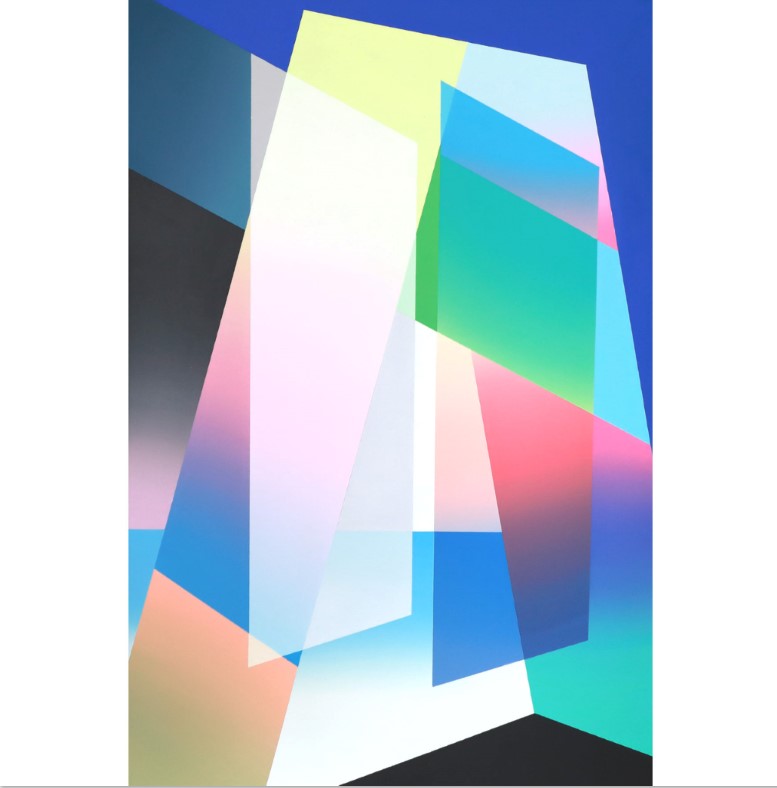
After my studies in graphic design in Bordeaux, I moved to Dublin, in 1999 at the age of 23: then worked as a graphic designer for a Whisky company. As a self-made artist, I spent more and more time drawing and I discovered, during several months in Asia and Oceania, The use of clay in New Caledonia. Back to Europe in 2002, I settled down in Milan and decided to fully dedicate myself to ceramics. I did my first exhibition at the Cultural Area Frida. A new trip to Asia helped me to deepen and personalize my work. Living close to Bordeaux since 2004, I’ve produced, in the first place, ceramics, associating a shape with a drawing. Searching for more freedom in the way to express myself, I have slowly started giving up clay to prioritize a new material: resin and then aluminium. It allows me to shape my drawings the way I really want it to.
The Unbridled Geometry
Nicolas Dubreuille’s journey towards art has been a circuitous one: after starting out in visual communication, working as a graphic designer and extensive practice of ceramics, by the middle of 2010 he devoted himself to pain sculptureting. His art was progressively subjected to the language of geometry infusing it with a playful spirit, excluding the austerity often associated with this form of art.
The profuse and dynamic nature of Nicolas Dubreuille’s creative inspiration is expressed particularly well in his sculpture. Unencumbered by mass, his metal or painted creations oscillate between abstraction and figuration: arising from the intersection of geometric flat surfaces, they generally evoke the human figure in appearance. The layout of the forms is primarily vertical while elements akin to limbs unfurl laterally. There are also several evocative details like a plane hollowed out by a small oculus as an eye. Nonetheless, there is a gradual development towards more abstract sculpture. The way he creates his art is one of the reasons for this; he has amassed a reservoir of forms with which he creates his volumes, like an endless alphabet. Indeed, an artwork emerges from the gradual addition of components that were originally offcuts from his previous sculptures and not intended for use. There is therefore a degree of the unknown in the final appearance of the work since it is no longer the three-dimensional concrete expression reflecting a preparatory study. Nicolas Dubreuille’s sculptures undeniably belong to the sculpture genre through the virtual volumes that they engender, the rhythms and the unique tensions that they create in the space. However, they reflect the bi-dimensional structure of painting. Toying in particular with unique, bright and shiny colours, they have a presence that blends elegant minimalism with the humour of pop, or for example Antony Caro and Keith Haring, two artists in very different realms yet who influenced him equally.

Colour is also granted a predominant place in his paintings, however unlike sculpture, he explores the variety and diversity of its qualities. Since 2015, the artist has been creating a series of paintings based on the use of coloured planes, executed on canvas or on rice paper, to add more substance to the artwork. The skilfully orchestrated distribution of these colourful planes across the two-dimensional canvas is based on the combination of horizontal, vertical and diagonal rhythms. Colour gradation and effects of transparency and depth emerge from their staggered superimposition and juxta position. With expertise and impressive dexterity, Nicolas Dubreuille appears to be testing the experimental and intuitive nature of his approach: from one work to another, the composition is almost identical but the colours, shades, tones and light intensity change. In some paintings, the elements in the composition are clearly distinguishable from the plain background, helping to provide an impression of lightness and floating. Elsewhere, backgrounds and forms encounter one another in equal measure merging on the surface. A series of works, restricted to black and white and their gradients, marks a break as such, expressing a need to refocus on his objectives. While there is a preference for rectangular forms and their derivatives, canvases with circular forms are also present. Certains paintings, in this respect, convey the experimental research carried out by pioneers of geometric abstraction, or more recently, that of the great master of colour, Piero Dorazio.

Latterly, Nicolas Dubreuille has taken a new approach to his painting : his compositions, structured by broad bands of colour, are more radiant and have gained in clarity. Intertwined and constrained by the physical boundaries of the frame, they determine an area of shallow depth and create a sense of tension. In order to focus on the visual impact of his painting, the artist has reduced his range of colours to six, perfectly precise colour planes, without any modulation or gradation, in the pure tradition of American hard-edge painting. The viewpoint is therefore drawn to the relationship between the elements, the interplay of equilibrium and tension structuring the surface of the painting in a dynamic fashion.
The art of Nicolas Dubreuille, an artist who has joined forces with colour and geometry, is animated by a desire for research and renewal. His visually intense paintings, like his sculptures, do not yield to any system and resonate in a contemporary manner through their minimalist and pop spirit.
- Domitille d’Orgeval Art critic



.svg)
.svg)
.svg)













%252054x35x37cm%252C%25202022.jpeg)

%252049x20x30cm%252C2019.jpeg)
%2520160x60x60cm%252C2023.jpeg)
%252059x26x26cm%252C%25202020.jpeg)
%2520175x110x90cm%252C%25202020%2520OK.jpeg)


